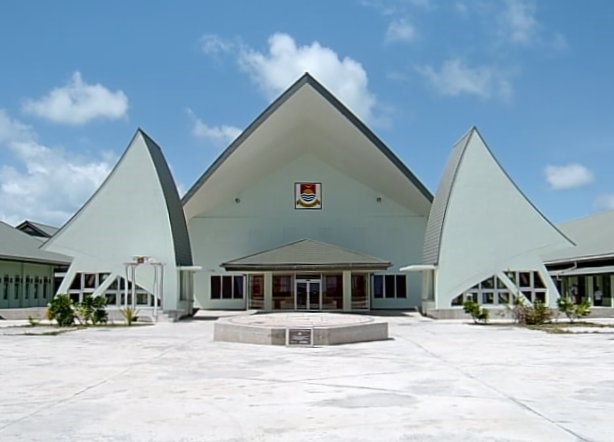Welcome to the Maneaba ni Maungatabu

In 1979 the Gilbert Islands, Banaba, the Phoenix and the Line Islands became the independent Republic of Kiribati. The Republic has a total land area of 810 square kilometres and consists of thirty three atolls and islands, spread across approximately a third of a million square kilometres of the Pacific Ocean, of which 21 islands are inhabited.
The Kiribati Parliamentary system is quite unique in that it is a blend of both the British and American systems. Te Beretitenti (President) is elected nationally. Members of the Cabinet are appointed by Te Beretitenti from amongst the Members of Parliament. The Speaker, although not a member of Parliament, is elected by the Members. The first form of a Parliamentary system began in 1963 with the establishment of the Advisory Council that had five elected members and some appointed ex-officio members. In 1967 the Advisory Council was replaced by the House of Representatives and the number of elected members was increased to twenty-three. The House of Representatives was replaced by the Legislative Council in 1970 and the number of elected members further increased to twenty-eight while the number of ex-officio members decreased. In 1976 the House of Assembly replaced the Legislative Council. The House of Assembly continued until independence when it became the Maneaba ni Maungatabu with thirty-five elected members, one nominated member (from Rabi) and one ex-officio member (the Attorney-General). The number of elected members has, at the 2007 elections, increased to 44 making a 46 member unicameral parliament.
The President (Te Beretitenti) is both Head of State and Head of Government, and is nominated from among members of the Maneaba ni Maungatabu to be elected in a presidential election by universal adult suffrage. The President appoints his/her own Cabinet, which is composed of the President, Vice President, Attorney-General and no more than ten ministers selected from members of the Maneaba ni Maungatabu.


